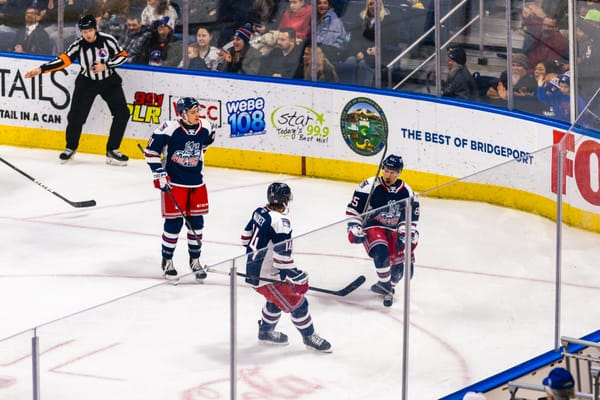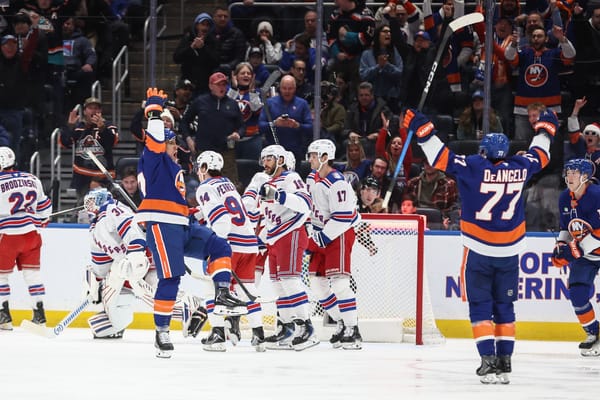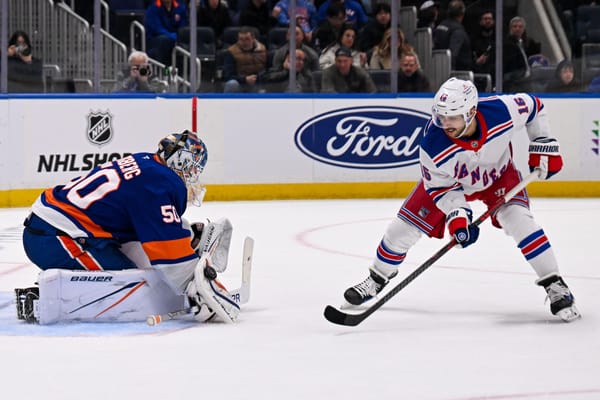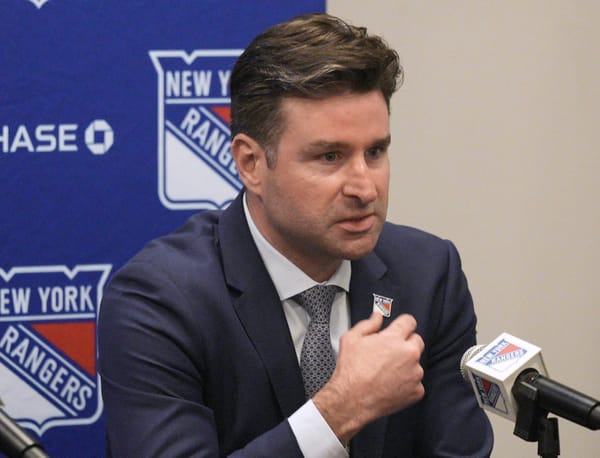Here’s How The Rangers Should Sell At The Deadline
Prior to Tuesday’s 5-1 defeat of the Philadelphia Flyers, it had been nearly a month since the New York Rangers last won a game in regulation, when they beat the Anaheim Ducks by a score of 4-1 at Madison Square Garden.
Over the span of the month that’s followed, the Rangers have run through an impressive cycle of bad hockey. They’ve lost to bad teams (Detroit and Ottawa), have squeaked by really bad teams leaning on Henrik Lundqvist/Ondrej Pavelec (Arizona, Buffalo), have been beaten by middle-of-the-pack teams (Islanders, Pittsburgh) and have been smoked by good teams (Chicago, Las Vegas — the score was 2-1 but that was another one of those Pavelec mirages in the desert).
A few members of the media (notably Larry Brooks) has already started laying the foundation for the current New York Rangers reality: They need to be sellers this year. Hell, even Uncle Bob has gotten on the train:
Within reason, judiciously sell. But let’s be honest, a NYR team that sits in a playoff spot can’t go the fire sale route. I don’t believe the market, or the owner, would approve: https://t.co/bcaCphmDKJ
— Bob McKenzie (@TSNBobMcKenzie) January 11, 2018
Even before the Chris Kreider injury there really should have been no illusions to what this team is: a potential playoff contender who might win a round on the back of their all-world goaltender. Without Kreider, the chances of that become even slimmer. Yes, the East is a mess outside of the top, but the Rangers have taken risks like this before and can’t afford to keep buying their way into first or second round playoff losses. That business model isn’t sustainable.
As of this writing, with the Rangers playing the way they are and the Kreider injury? It should simply reaffirm the fact that the Rangers need to be sellers come this year’s trade deadline. (Kreider, by the way, had a surgery to alleviate the pressure on his veins that may have contributed to the clot. He’s out indefinitely, but I wouldn’t expect him back before the playoffs at best.)
In my view, the Rangers have four tiers of assets come the deadline:
Tier One: Elite-Level Return
This is the Ryan McDonagh tier, and he is renting out the entire top floor of it. There are already public whispers that McDonagh’s name might find itself on the trade block, which is somewhat jarring, even if it is needed. (Mike and I talked about this on the podcast last week.) For full disclosure, this is a road I’ve been advocating the Rangers at least peek down for the better part of the past four months in addition to the small chat Mike and I had on the podcast on Friday.
McDonagh has the most value in a trade this year, where the acquiring team can get two playoff runs out of him and one full season — akin to the Keith Yandle trade to the Rangers — at his reduced contract. McDonagh’s true value is that he’s good enough to turn a decent team who needs defensive help into an actual Stanley Cup contender. He’s an upgrade to any top four, and if a team is looking to bolster their top pair he would be the best trade chip on the market by a mile.
There are justified complaints about the lack of high-end prospects in the Rangers’ system — right now that award belongs to Filip Chytil (deservedly so) with Lias Andersson behind him. I suppose we could include Anthony DeAngelo here, but at 23 the days of him being a true “prospect” are coming to an end, so I’m excluding him from this. A McDonagh trade could fix that in a heartbeat. You’d have to think most prospects would be available for a player of McDonagh’s caliber to become available, and inside of a package at that. If done right -- and there’s reasons to be speculative about this based off the Derek Stepan disaster — Jeff Gorton can give the Rangers an elite prospect/young NHL player and add picks in a surprisingly deep draft. The return could be truly staggering.
The risk here, however, is this cannot be screwed up. Teams don’t give do-overs for mistakes made with trades (again, ask Gorton when it comes to Stepan) and general managers don’t get many chances to make this level of a move. McDonagh, if available, should dominate the trade chatter, illicit a bidding war, and get an enormous return. Anything less would be a failure of catastrophic proportions.
Tier Two: Make A Hopeful Pay For It
Where McDonagh brings instant credibility to a wider range of hopeful teams, Grabner and Nash might be the “missing piece” for teams closer to contention as your typical Trade Deadline rental.
Grabner is atop the league in even strength goals the past two years (note: empty net goals somehow still count as even strength) and his speed/scoring/defensive game are each dynamics a contending team would trade for, let alone all three of them. His cap hit (especially once it’s pro-rated) should be easy enough to fit in without having to give anything back as well, which makes a big difference when you’re looking to avoid taking salary back. I can see Grabner’s return being around a first round pick, if not a package with lower picks that’s based around prospects. If the Rangers want to go down the picks road, this is the draft to do it, especially if they can get a pick in the back half of the first.
Nash probably won’t get as much as Grabner, but his all-around game can also be a game-changer. Plus, he’s scoring at a historically low rate compared to the individual chances he’s generating, so if a team has an actual stat package they use, he could be the guy who gets red-hot for the playoffs.
Rick Nash has one of the highest total individual Expected Goals (better than Kucherov...~ 2 behind Ovi), and one of the worst differentials between Expected and Actual. https://t.co/GuqBqGkzzK
— Rubray Wyatt Squad (@RickNashtag) January 16, 2018
Nash’s ability to work all three zones is a huge plus, and despite his lack of goals in the playoffs on Broadway, Nash is a player who should be feared when slotted into the top six. And if a team has enough depth to put him on the third line, it makes him even more dangerous. The rub here is his contract. The $7.8-million will be pro-rated at the deadline, but it’s still not going to be an easy pill to swallow for everyone (think Eric Staal with the Rangers when you have the mental ability to read about it and not bash your head into the wall).
Both players should be moved at the deadline. If the Rangers want to have an under the table talk with both of them about returning this summer after the trade (which is illegal, but isn’t really something that can be proven) I’d be down for it. I think that would work much better with Nash than with Grabner. Grabner is going to get a lot of money on the free market this summer, and he’s allegedly seeking a four-year deal. He’s proven me wrong already with this year’s totals, but I wouldn’t keep doubling down if I was Gorton. Get your value and get out.
Tier Three: A Summer Plan, Probably
Nick Holden is the main guy I’m thinking about here, although it’s unknown what Holden would actually generate in a return. Analytically driven teams more than likely see Holden for what he is — a bottom-pair defenseman who could be a fourth on his best days. The NHL, however, works in mysterious ways, and because Vigneault is playing Holden like a top pair guy he might get viewed as a true top-four guy. He’s a UFA at the end of the year, so this would be a pure rental, but it could be a rental in the way Brendan Smith was — where the team grabbing him expected to re-sign him over the summer. I’m not sure how much value Holden actually has — even the Smith package of a 2nd and 3rd round pick seems high for him -- but with these NHL GMs you never really know.
Brendan Smith is the other name you can see in this category, although this is a much more complicated situation for the Rangers. Especially from the “asset management” standpoint where Gorton doesn’t exactly have the best resume. With three years remaining on his deal, Smith is not a rental, but his value has also been tanked thanks to him reportedly coming into camp out of shape and being routinely healthy scratched for Steven Kampfer. The Rangers could mulligan Smith in a trade -- say, for Jack Johnson who is a downgrade but also a UFA next year -- to simply regain the cap space. That would be selling very low on a guy who they paid a lot for, but if the Rangers are keen on moving on this is the way to do it. Unless someone is willing to give them picks and not ask for the Rangers to take salary back, but I’m not sure I see that as possible with the way Smith has been handled this year.
Tier Four: Only If We’re Truly Burning It All To The Ground
If the Rangers are truly rebuilding, and they want to blow it all up then names like Mats Zuccarello and Henrik Lundqvist.
Let’s get one thing straight here: The Rangers can trade every single player named in the first three tiers, and not burn everything to the ground. Depending on what they get back, they can utilize the new cap space and their assets to put a younger team on the ice next year that might grow into the role of playoff contenders. Lias Andersson and Filip Chytil would have another year of experience under their belts to enter a full NHL season with, the core would still be young enough to deal with the growing pains, and the Rangers wouldn’t be in a position where they needed to win. The rub here is you’re semi-screwing Henrik Lundqvist in his bid for a Stanley Cup ring, but the Rangers made that bed and they eventually need to sleep in it.
HOWEVER ... If Gorton is looking at what the Rangers have and wants to do a full rebuild, then he needs to move on from Zuccarello and Lundqvist — although you owe that man the opportunity to hand-pick where he’s going if you’re going to move him.
I would argue that Zuccarello would still get a very high-level return, and Lundqvist wouldn’t be far behind him if a team is in need of goaltending. To be fair, if you’re doing this you can keep Kreider, J.T. Miller, and Kevin Hayes since you’d be signing them while they were young. Brady Skjei, too. I wouldn’t move on from Kevin Shattenkirk or Smith, believe it or not. Eat some of Marc Staal’s cap and get him elsewhere. You know the drill when you’re digging out of the well.
Anyway, that’s how I see things shaking out. Thoughts?





